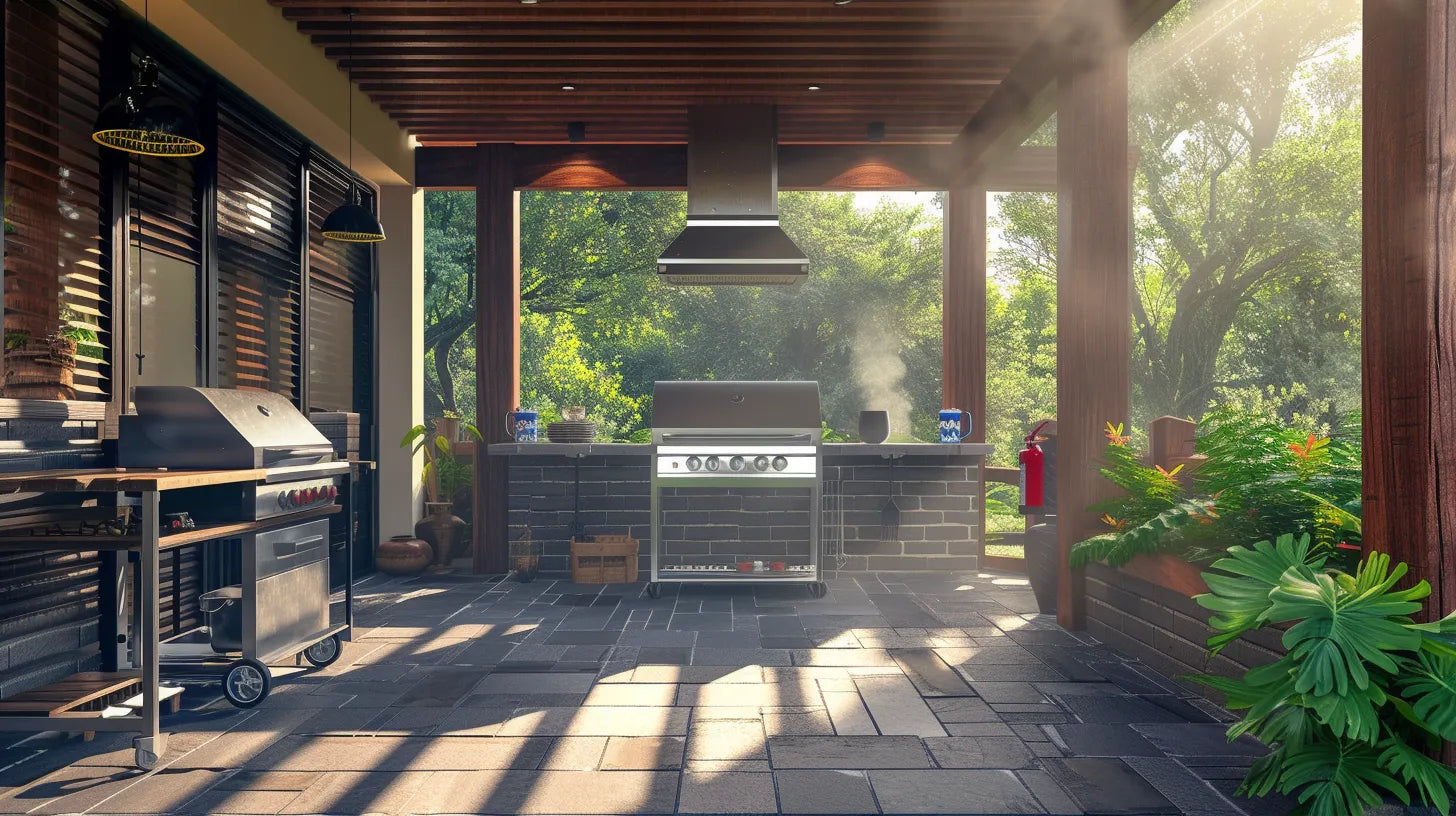The question of whether one can grill under a covered patio encompasses not only the joy of outdoor cooking but also the imperative of safety.
Grilling in such an environment requires a nuanced understanding of ventilation, the characteristics of different grills, and their impact on surrounding materials.
While the allure of a year-round barbecue is undeniable, the choice between gas, pellet, and charcoal grills can significantly influence the feasibility and safety of this activity.
As we explore these considerations, it becomes clear that the answer is not merely a matter of can or cannot, but how one can do so responsibly and effectively.
Grilling Safety Measures
Ensuring safety while grilling under a covered patio involves adhering to several key measures, including positioning the grill appropriately, having fire safety tools on hand, and ensuring the area is well-ventilated. To mitigate the risk of fire, it's crucial to keep the grill at least 10 feet away from any flammable materials, such as the home's siding, outdoor furniture, or overhead trees. This strategic placement not only prevents potential fire hazards but also contributes to maintaining a secure grilling area.
Having a fire extinguisher within arm's reach is another vital safety measure. This ensures quick access in case of an emergency, allowing for immediate action to combat any unexpected flames. Additionally, it's important to avoid using the grill in high wind conditions, which could spread flames unpredictably and increase the fire risk.
Ensuring good ventilation is paramount to prevent carbon monoxide buildup, a colorless, odorless gas that poses serious health risks. Proper ventilation helps to maintain a safe environment by dispersing harmful gases away from the covered patio area.
Moreover, never leaving the grill unattended is a fundamental safety practice. This vigilance helps to quickly address any issues that may arise during the cooking process, further ensuring a safe and enjoyable grilling experience.
Ventilation Essentials
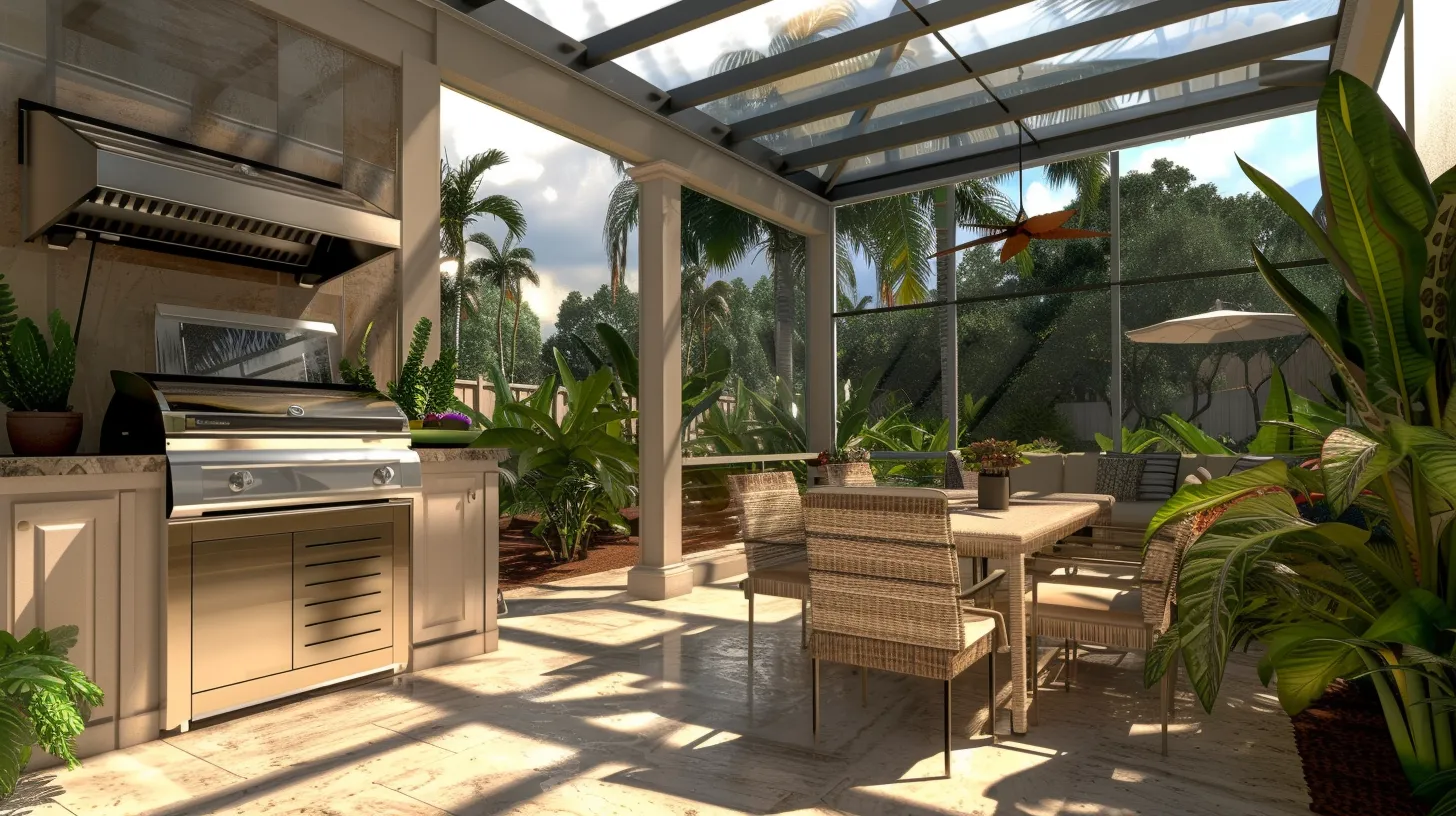
Having discussed the significance of safety measures while grilling under a covered patio, we now turn our attention to the importance of proper ventilation, a critical factor in maintaining a safe and pleasant outdoor cooking environment. Proper ventilation is the linchpin for safe grilling under a covered patio, as it plays a pivotal role in preventing smoke accumulation and ensuring even cooking. This not only contributes to the quality of the grilled food but also significantly reduces the risk of carbon monoxide dangers, a silent threat in enclosed or semi-enclosed spaces.
Adequate airflow is essential in dispersing harmful contaminants, making the monitoring of weather conditions a vital practice to adjust ventilation for optimal results. Strategic positioning of the grill is key, enhancing airflow and controlling smoke to create a safe and enjoyable grilling experience. Moreover, regular maintenance and cleaning of the grill are indispensable practices. These efforts aid in efficient ventilation and minimize the risk of smoke-related hazards, ensuring that the joy of grilling under a covered patio remains a delightful and safe experience for all involved.
Best Grill Types
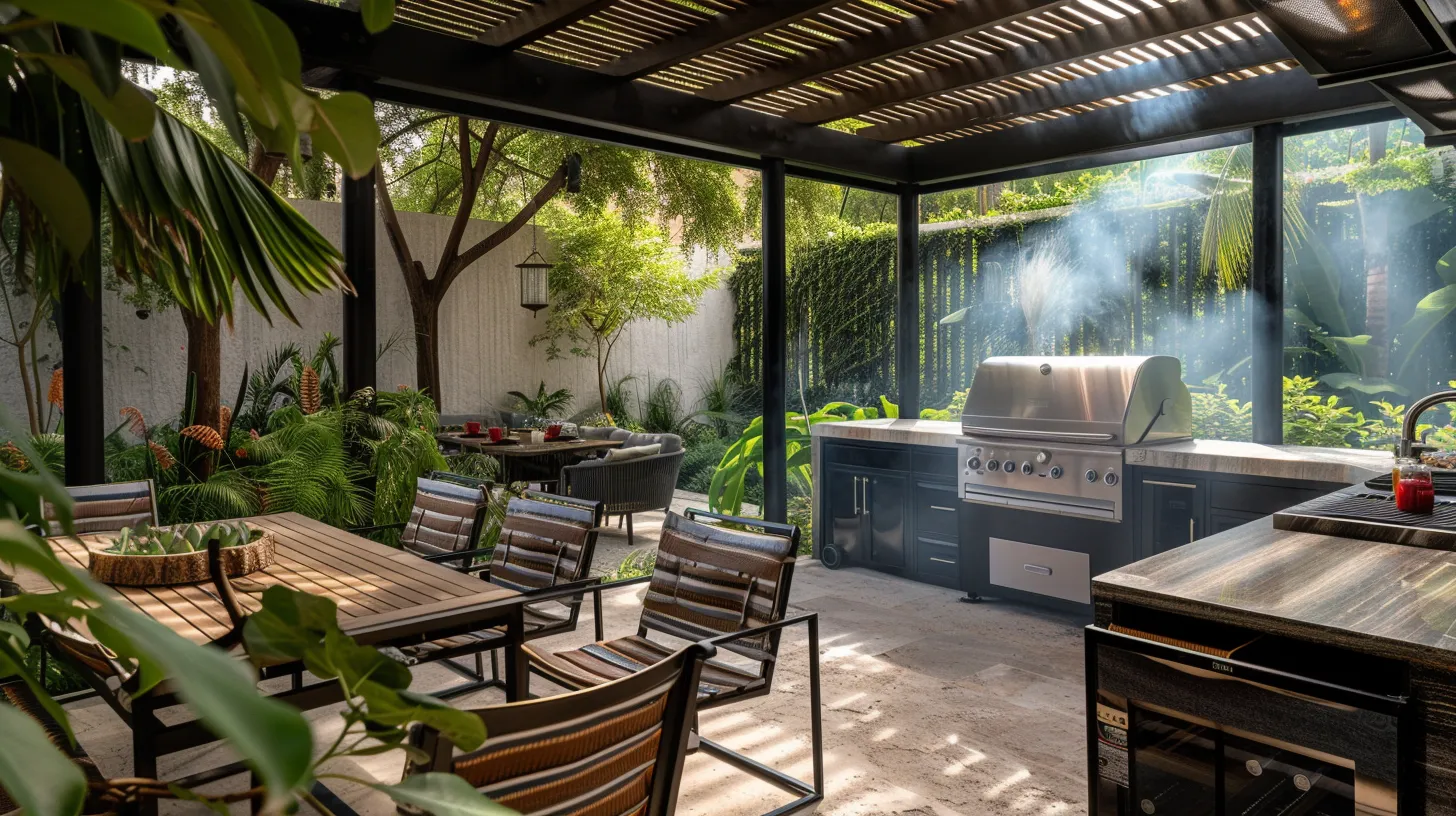
Selecting the optimal type of grill for use under a covered patio is a crucial decision that significantly impacts both safety and cooking quality. When grilling in an enclosed area such as a patio with a cover, it's essential to consider the type of grill that will ensure a safe and enjoyable cooking experience.
Gas and pellet grills are recommended for their controlled heat and minimal smoke output, making them suitable for use under a covered patio. These grills offer a safer option by reducing the risk of fire hazards and harmful emissions. On the other hand, charcoal grills are not advised for use in such settings due to their higher smoke production and potential fire risk.
When choosing the best grill type for your covered patio, consider the following:
- Gas Grills : Offer ease of use and control over the cooking temperature, ideal for an enclosed patio area.
- Pellet Grills : Provide a smoky flavor without the excessive smoke output of charcoal grills, suitable for covered settings.
- Space and Ventilation : Ensure there's enough space and consider the patio cover's height for proper ventilation to safely accommodate the selected grill.
Choosing the right grill type enhances the grilling experience under a patio cover while prioritizing safety and cooking performance.
Grill Maintenance Tips
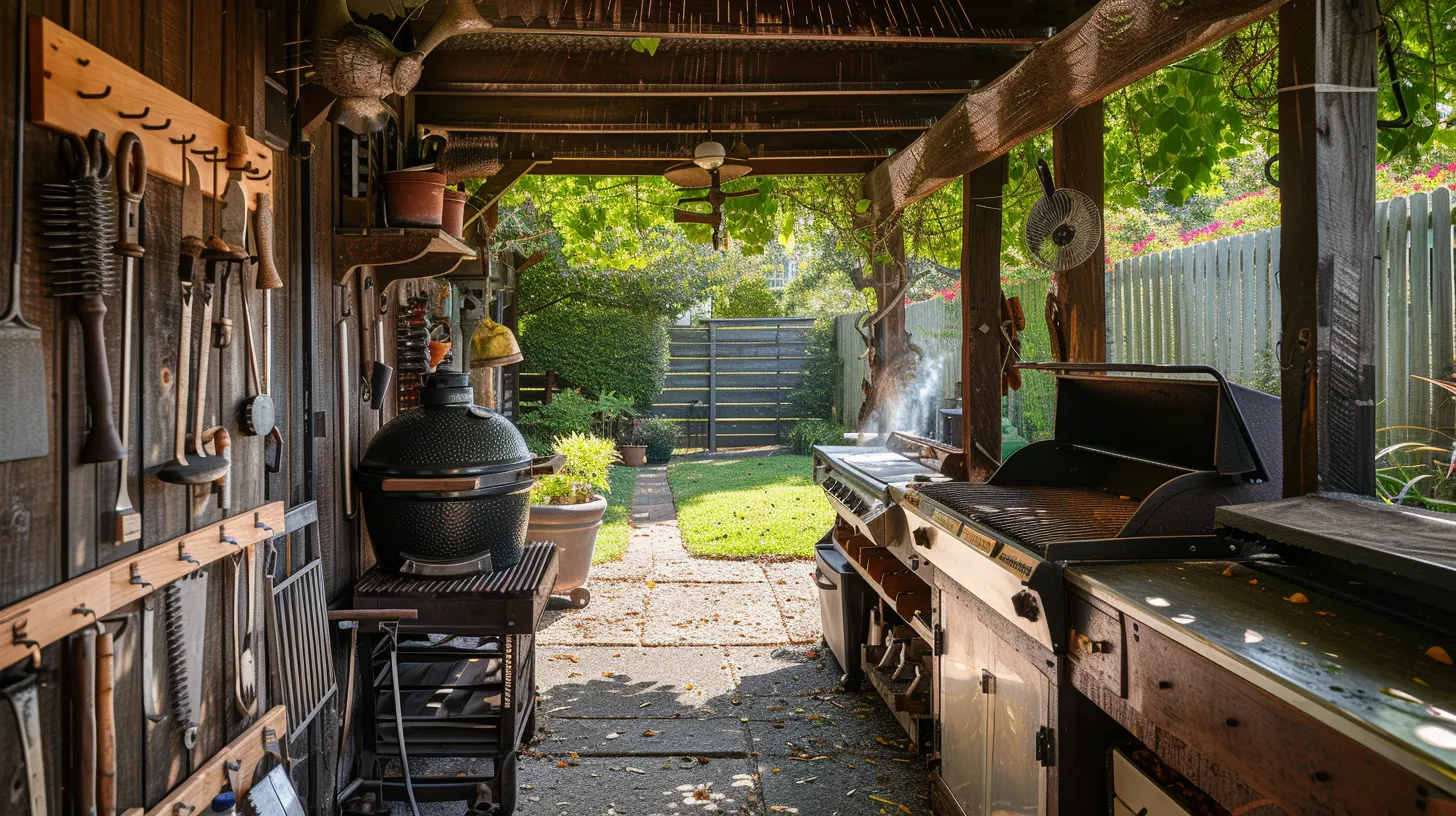
After discussing the importance of choosing the right type of grill for a covered patio, it's critical to consider how regular maintenance plays a pivotal role in both the safety and efficiency of your grilling experience. To ensure that you can safely and effectively grill under a patio, it is essential to regularly clean your grill. This not only prevents grease fires, a common hazard, but also guarantees that your food cooks evenly. Cleaning should include the grill grates and interior to eliminate grease buildup.
Moreover, to maintain good functioning and safety, check and clean the burner tubes, ports, and igniters. Inspecting gas connections and hoses for leaks or wear is also crucial; damaged parts should be replaced promptly to reduce the risk of accidents. Using a weatherproof cover when the grill is not in use protects it from the elements and helps prolong its lifespan.
Additionally, maintaining proper airflow around the grill is vital to prevent carbon monoxide buildup, ensuring that grilling under a covered patio remains a safe activity. Never leave your grill unattended and always ensure that these maintenance tasks are performed regularly for the best grilling experience.
Impact on Patio Materials
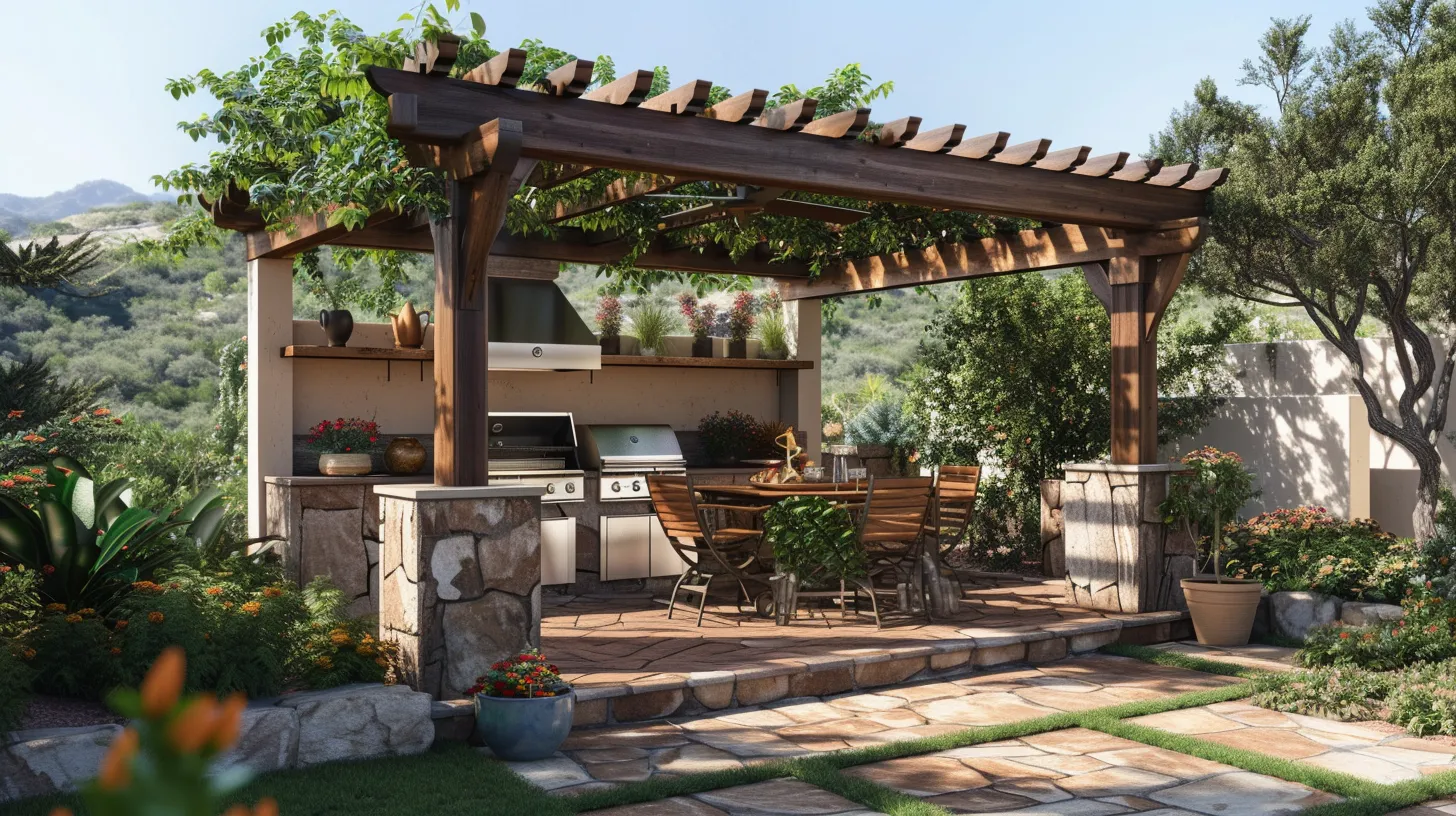
Grilling under a covered patio frequently raises concerns regarding the potential for grease stains, smoke damage, and the deterioration of patio materials due to heat exposure. When the allure of a backyard barbecue meets the practicality of maintaining a pristine patio space, homeowners must navigate the balance between enjoying their outdoor cooking experiences and preserving the integrity of their patio surfaces. The intense heat from grills can discolor or warp patio materials, significantly affecting their longevity and appearance. Furthermore, the accumulation of grease and smoke residue can lead to challenging cleanup and potential safety hazards.
To mitigate these issues, consider the following strategies:
- Use a grill mat or protective barrier: These can serve as a shield for your patio surface, preventing direct contact with grease and intense heat.
- Opt for heat-resistant patio materials: Choosing materials that are resistant to high temperatures and easy to clean can greatly reduce the impact of grilling activities.
- Regular cleaning and maintenance: Keeping your grill and patio area clean helps avoid the buildup of grease and smoke residue, thus protecting the patio materials from potential damage.
Incorporating these practices will not only extend the life of your patio but also ensure a safer and more enjoyable grilling experience. Keep a fire extinguisher handy and consider installing an outdoor range hood to further minimize risks and keep away unwanted grease stains and smoke residue.


